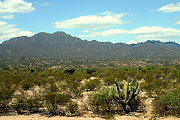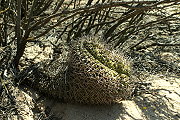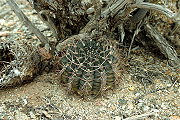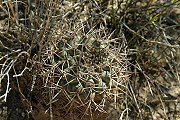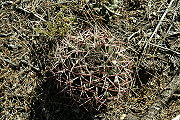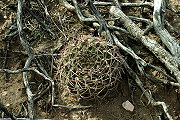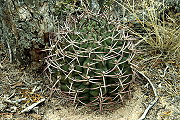Gymnos in habitat
Gymnocalycium schickendantzii (Weber) Britton & Rose
Echinocactus schickendantzii was described by F.A.C. Weber in Dictionnaire d` Horticulture in 1896. The plants were named after their discoverer Schickendantz, who worked as a teacher in Tucaman. Later on, the species was incorporated into the genus Gymnocalycium by Britton and Rose.
In Argentina, G. schickendantzii has the largest habitat of all Gymnocalycium. The huge area stretches from the south of the province Salta to the south of the province San Luis.
The species predominantly grows on sandy soils, mostly in the shade of other plants. Specimen populate altitudes of about 200 to 1600 metres. The species is fairly variable, due to its different habitats. Flowers mostly grow out of the areoles at the rim of the apex, but often also on the side of the body. The colour of the flowers varies between white, pale yellow and pink.
Plants can grow to considerable size in nature - specimen with a height of 80 cm are not uncommon - and often make a very vital impression. Even salty grounds are tolerated.
